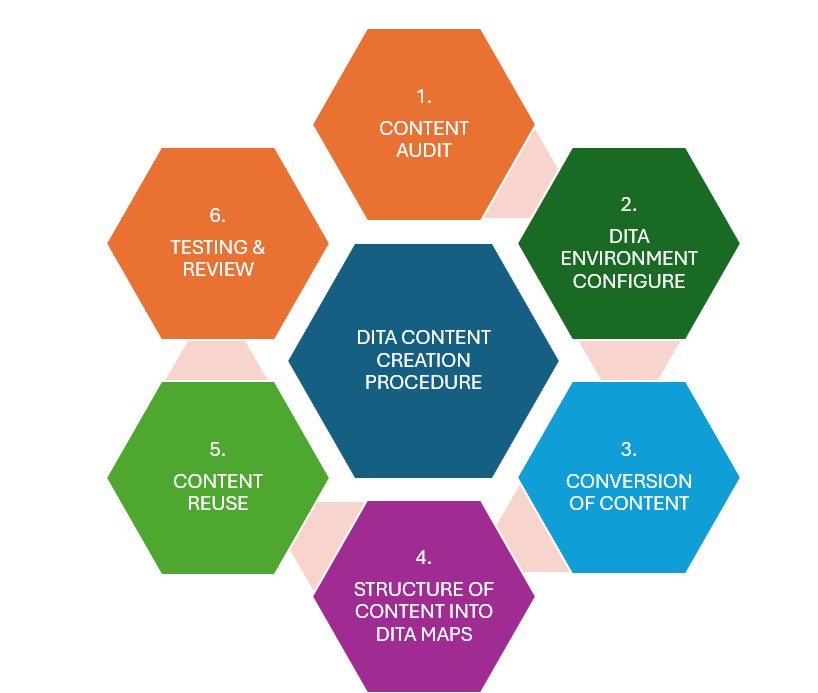Below is a step-by-step guide for migrating content. Please let me know if you’d prefer to target a different route.
1. Migrating Current Content to DITA:
Step 1: Content Audit
- Audit your existing documentation to determine reusable elements.
- Break the content into smaller, logical pieces (e.g., chapters, sections) that can be converted into DITA topics.
Step 2: Configure the DITA Environment
- Select the required tools: generally considered XML editors are oXygen XML, XMetaL, or Adobe FrameMaker.
- DITA Open Toolkit: DITA-OT should be installed in order to publish content to different output formats (including XML, PDF, etc.).
Step 3: Conversion of Content
- Transform existing content (e.g., Word documents or PDFs) into DITA-compliant XML topics. This may include manual transformation or the use of migration tools such as oXygen XML Editor or XMetaL.
- Develop DITA topics from content types: Concept, Task, and Reference.
Step 4: Structure Content into DITA Maps
- Develop DITA maps to structure your topics hierarchically.
- A map is actually a blueprint for your document. It connects topics to each other in a useful manner.
Step 5: Implement Content Reuse
- Determine where content reuse can be applied (e.g., glossary definitions, general procedures, troubleshooting).
- Conrefs signify the use of the same matter among topics time and again.
Step 6: Testing and Reviewing
- After publishing by means of DITA-OT for generating any output format, such as HTML, PDF, etc.
- Review the output and design the content structure, if necessary.
2. Starting a DITA Project
Step 1: Setting the Content Strategy
- Content Types: Which one will it take? Could it be a Task, a Concept, or a Reference?
- Modular Design: Designed to allow small content chunks for maximum flexibility and repeatability.
Step 2: Set Up Your DITA Environment
- Select a Tool: Pick an XML editor that supports DITA (e.g., oXygen XML or XMetaL).
- DITA Open Toolkit: Install and set up DITA-OT for publishing content into various outputs (e.g., PDF, HTML).
Step 3: Begin Creating DITA Topics
- Write your content in Concept, Task, and Reference topics, depending on the topic.
- Use topic attributes (such as version, audience, and platform) to add to the functionality of your content.
Step 4: Structure Content Using DITA Maps
- Structurally group similar topics into DITA maps, which determine the structure and relation of your topics (such as chapters or document sections).
- You can also use maps to identify navigation or output sections (e.g., separate books or user manuals).
Step 5: Content Reuse
- By referring to reusable content with conrefs and keyrefs or associating them with commonly used words, images, or phrases, you save both time and consistency.
Step 6: Publish Content
- Use DITA-OT for the final output of HTML, PDF, or ePub format.
- You may also include user-defined stylesheets (CSS, XSLT) to customize the output format.
Step 7: Check and Iterate
- Test your publish process and examine the output formats to verify that content is displayed properly.
- Correct any required modifications in your topics or maps for improved clarity or organization.

For Collaboration and Localization
These would be the extra steps that need to be followed for collaboration and localization in case it is ever needed.
Team Collaboration: Use a DITA CMS (like SDL Tridion Docs or Componize) for automatic versioning and collaboration when in a team setting. Localization: For translated content, use translation management software integrated with DITA, such as SDL Trados Studio or MemoQ.